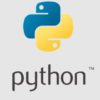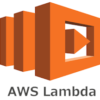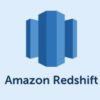Author: user
Advanced grouping and aggregation operations on DataFrames in PySpark
In this article, we will explore one of the lesser-known yet incredibly useful features of PySpark: grouping_id. We will cover…
Working with configuration files in Python using configparser
Configuration files are a fundamental part of many software applications. They allow developers to store and manage various settings and…
Python Script to list Installed packages with installation dates
To find the last installed libraries in Python, you can use the pip tool, which is the package manager for…
NodeJs : How to trigger AWS Lambda functions -NodeJs with API Gateway: A Step-by-Step Guide
Introduction: AWS Lambda functions provide serverless compute capabilities, while API Gateway allows you to create RESTful APIs to interact with…
Role of DevOps engineers
DevOps engineers play a critical role in modern software development and IT operations by bridging the gap between development (Dev)…
Role of DataOps engineers
DataOps engineers play a crucial role in managing and optimizing data pipelines and processes within an organization. DataOps is a…
Common Python Error: ‘bytes’ object has no attribute ‘encode’ – How to fix It
One of the errors that developers often encounter is the “AttributeError: ‘bytes’ object has no attribute ‘encode’” error. This error…
Locating the subfolder of an Apache Airflow DAG
In Apache Airflow, when you have multiple subfolders within your DAGs folder, it can sometimes be challenging to locate the…
Aggregate values into an array for a group of rows in Redshift using ARRAY_AGG()
Amazon Redshift, a robust data warehousing solution, offers an indispensable tool for this purpose – the ARRAY_AGG() function. In this…
Analyzing data trends with Amazon Redshift’s LEAD() function
Data analysis often involves examining how values change over time or comparing current data points with subsequent ones. Amazon Redshift…












